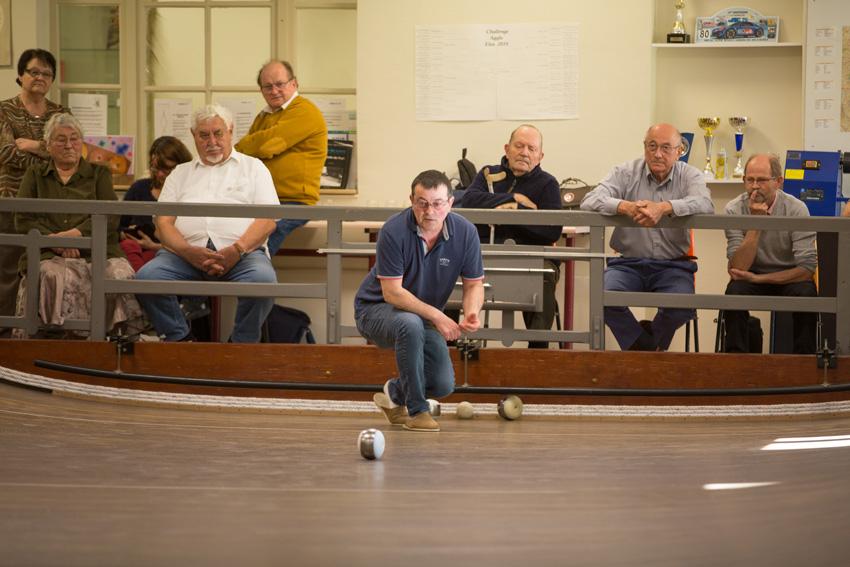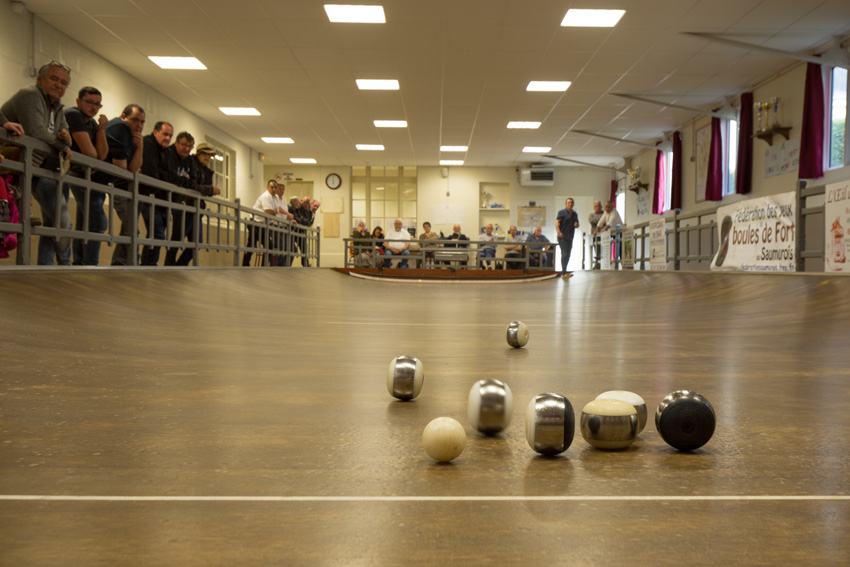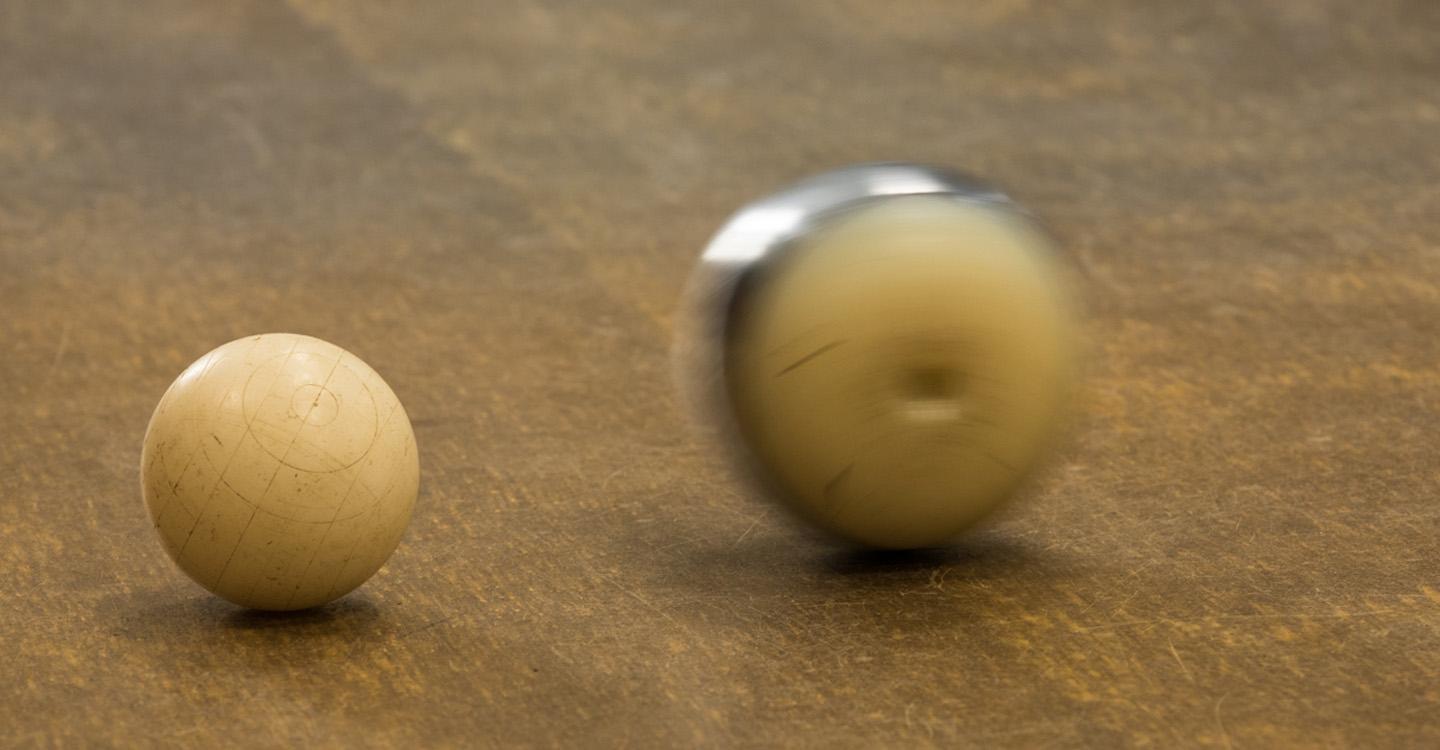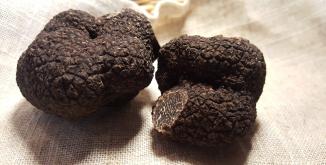A traditional game of the Loire valley and especially the Anjou region, the « boule de fort » game is the only sport you play wearing slippers. It is unique in France and listed as UNESCO Intangible Cultural Heritage.
The rules are similar to petanque, but the conditions are totally different: the game is played indoors and in silence, on a curved field with asymmetric and lopsided boules. It’s really not easy to place a boule close to the “maître” (jack).
The origin of the boule de fort game is rather mysterious. There are a lot of different theories about it. Some say, the game was first brought to the Loire valley by English and Dutch merchants who played a similar game called “boulingrin” (“bowling green” or “lawn bowl” in English as a reference to grass fields) which was popular all over the Commonwealth. In some parts of Belgium and the Netherlands as well as in the North of France (around Tourcoing, Lille, …), people played “bourle” which is also similar to “boule de fort”. In fact, nobody really knows where this sport comes from, but this doesn’t keep people from playing!
The “boule de fort” clubs or circles are convivial places where people meet to play and train for challenges, but also to have a chat. Maintenance fees are payed with the income of the refreshment bar.
Today, clubs are open to everybody, but it was not always like this: up to the 1970s, women were not allowed in the clubs and newcomers could only be admitted when sponsored by a club member.

Boule de fort rules
The aim of the game is simple: place the boules as close to the “maître” (equivalent to the jack at the petanque) as possible. You need 12 points to win and play in teams of two or three.
It’s the difficult conditions that make the boule de fort game so original: the field is curved, not flat. The boules are not round nor balanced. They are half flat (larger than high) with an iron circle. So, one side is heavier than the other (that’s the “fort”) and the centre of gravity is staggered. In this context, it is impossible to throw the boule straight because it never follows a straight path. First of all, you never really throw the boule: you place it softly to make it roll. At the edge of the field, players in carpet slippers hold on to the banister.
Boule de fort is a quiet game: in theory, it is not allowed to comment a turn in order not to distract the player. But this rule is not always followed …
Equipment and conditions have changed over time. In the past, the boules were made of guaiacum, a dense and hard kind of wood. The field is a bare ground. An intendant looks after it. He lives on-site and receives a small allowance.
Today, the 1,4 kg heavy boules are made of plastic. The size of the field has been reduced and the bare ground replaced by synthetic surfaces such as resin or lino. The games are played indoor, in long buildings displaying the name of the circle or the club up front.
An emblematic game of Anjou
The boule de fort clubs are a mixture of the English clubs, sports clubs and coffee shops. People meet to train for competitions or to play cards, have a drink and see friends.
The practise of the boule de fort has hardly ever gone further than the neighbouring Touraine and Sarthe: most of the clubs are concentrated in the areas of Baugé-en-Anjou, Saumur and Angers. In 2018, more than 373 clubs were registered to the Boule de Fort Federation of Western France. 312 of them are established in the Maine-et-Loire department. 19 others can be found in the department of Indre-et-Loire, 37 in Sarthe, 3 in Loire-Atlantique, 1 in Mayenne and 1 in Loir-et-Cher.
The oldest traces of the game in Anjou date back to the 17th century. But rules have first been documented by the club Pierre Lize in Angers in 1828 only. The golden age of the boule de fort starts in the late 19th or early 20th centuries. At that time, more than 1000 clubs were registered in 287 villages of Anjou; which makes an average of 4 clubs per town. In Mazé, there were 13 circles, nearly as many in Beaufort-en-Vallée and Saint-Mathurin-sur-Loire, and 15 in Corné.

Closed clubs start to open up
The clubs have been closed circles for a long time: one needed a sponsor to be admitted. Members where recruited following social, political or religious affinities. Until the end of the 1970s, it was not allowed to be a member of more than one club at the time, and those inviting in “strangers” risked to be fined.
Women could not become club members. For a long time, it was not suitable to have mixed leisure activities. The boule de fort was then a sport for men only. Lay and anticlerical people also feared that women might tell priests during confession about what was going on in the clubs. Finally, men enjoyed to meet without – as they would say – women being the party poopers.
In the 1970s, women were admitted to the clubs for the first time. With the development of challenges and competitions, the clubs’ spirit evolved, turning more towards the competitive sport part of the game. Mixed competitions have accelerated the integration of women. Since the 1990s, the average age has dropped and the game is not just leisure time for the retired any more!
Boule de fort rituals
The clubs are intrinsically convivial places. Member fees and consumptions allow to pay the maintenance of the field and a concierge if there is still one.
When a challenge is played, the winner pays the looser a drink. During a friendly game, it’s the other way around. If a player forgets to put the “maître” (jack) back in place, he offers a whole bottle to drink; same for someone crossing the field without getting on the walkway. Finally, a team which has not scored at all during a game has to “biser le cul de la Fanny” (kiss Fanny’s arse) to ward off the defeat. Fanny is usually a picture of a nude woman with a huge bottom, which losers have to kiss, if possible, religiously.
In the catholic clubs, a road leading to a small village is painted on the walls of the building. This village is Brion, because “aller à Brion” (go to Brion) was synonym to “biser le cul de Fanny”. Both expressions have the same origin: during an assembly day in Brion, a gossip is said to have shouted: “Losers can kiss my arse for ward off!” Please note that if you lose in Brion, you say “go to Jumelles”!


